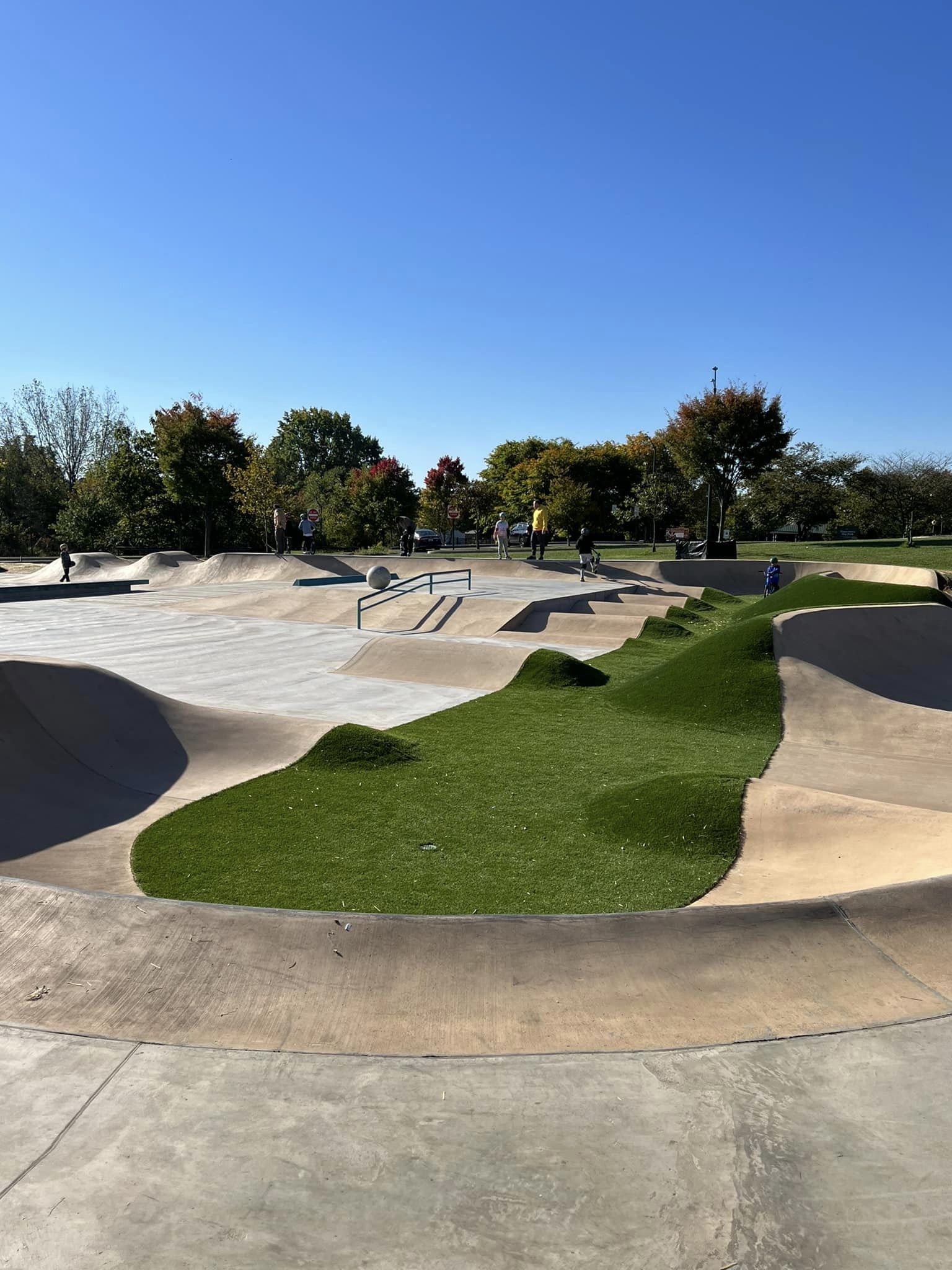Welcome to the Wonderful World of Skateparks: A Parent’s Handbook!
Introduction
Hey there, awesome parents! Are you ready to dive into the exhilarating world of skateparks with your kiddos? Fear not! This ultimate guide is crafted to help you navigate the ramps, the rails, and the joyful whoops of skatepark adventures with ease and confidence. So grab your helmets, gear up with those knee pads, and let’s roll into the fun!
Understanding the Skatepark Culture
Skateparks are brimming with thrills and a sense of community. It’s where kids not only learn new tricks but also essential life skills such as resilience, creativity, and sportsmanship. Understanding this culture is your first step toward becoming the most supportive skatepark parent on the block!
Choosing the Right Skatepark for Your Family
Not all skateparks are created equal, and finding the one that fits your young skater’s needs and skill level is key. Look for parks with well-maintained equipment, designated areas for different skill levels, and a friendly atmosphere that welcomes beginners. We’ll guide you through this important choice!
Prepping Your Kids: The Gear List
Safety first, always! Here’s the rundown of must-have gear to keep those little knees unscraped and those elbows unbruised:
- Helmet: A properly fitting helmet is a non-negotiable to protect those brilliant noggins.
- Knee Pads and Elbow Pads: Durable pads that stay put are your child’s second line of defense.
- Wrist Guards: A common newbie move is to catch yourself with your hands. Wrist guards are a wrist-saver!
- Proper Footwear: Shoes with flat soles give the most board control and grip. Say yes to sneakers, no to flip-flops!
The Non-negotiables: Skatepark Safety 101
While falls are part of the learning process, we want to make sure they’re just little bumps on the road. Here are some essential safety tips to discuss with your children:
- Understanding Their Limits: Encourage kids to take it step by step. Trying advanced stunts without the basics can lead to unnecessary accidents.
- Warm Up and Stretch: Just like any other sport, a good stretch and warm-up session pre-skate can prevent injuries.
- Stay Aware of Surroudings: The park is shared space. Teach your kids to watch out for others and take turns.
Learning the Lingo: Skatepark Terms Every Parent Should Know
Feeling a bit lost when your child talks about ollies, kickflips, and grinds? We’ve got you covered with a quick glossary that will have you talking the talk in no time:
- Ollie: A jump performed by tapping the tail of the board on the ground.
- Kickflip: A trick where the skater flips the board 360 degrees along its axis while in mid-air.
- Grind: Sliding on the trucks of the skateboard along an edge or rail.
There’s a whole dictionary of skate terms to learn, but we’ll keep adding more as we go along!
Skatepark Etiquette: The Unspoken Rules
Like any community, skateparks have their code of conduct. Teaching your kids these unspoken rules keeps the park fun and respectful for everyone:
- Take Turns: Skateparks can get busy. Taking turns and being patient ensures everyone gets to have a go.
- Keep the Park Clean: Nobody likes a litterbug. Bring a trash bag along for wrappers and bottles.
- Respect the Space: No sitting on the ledges or ramps — these are for skating on, not for spectating.
These are just a few to get started, and you’ll notice many more as you spend time at the park!
Continuing the conversation on support and involvement, it’s also wonderfully beneficial for parents to recognize their kids’ skateboarding milestones. Cheering on from the sidelines, capturing those proud moments, and even learning a move or two yourselves can be an awesome way to bond. Remember, whether they’re just starting out or landing their first kickflip, every step is progress in the grand skateboarding journey. Just wait, your little Tony Hawk or Lizzie Armanto might just be around the corner, all thanks to your fabulous support!
Isn’t it exciting to see the skatepark through your child’s eyes? Stay tuned as we keep rolling through this guide, ensuring you and your family make the absolute most of your skatepark odyssey. Keep spreading the stoke!

5 Essential Tips for Parents Preparing for the Skatepark Adventure
1. Get the Lay of the Land
Before your child sets wheel in the skatepark, it’s a good idea to visit it yourselves. Familiarize yourself with the layout, the types of obstacles available, and the overall vibe of the place. Check if there is signage for rules or designated areas for different skill levels. This reconnaissance mission will not only prepare you for what to expect but will also give you peace of mind knowing where your child will be practicing their skills.
2. Learn About Skatepark Features
Skateparks come with all sorts of features, including bowls, halfpipes, and stair sets. Understanding these features and their intended use will help you guide your child and keep them safe. For example, bowls are great for learning how to ride transitions, while flat ground is perfect for mastering basic tricks. Knowing the complexity of each feature will aid in gradually leveling up your child’s skateboarding skills in a safe progression.
3. Prepare for the Unpredictable
Skating can sometimes lead to falls and bruises, and it’s always good to be prepared. Bring along a first aid kit for those unexpected scrapes and cuts. Additionally, bringing some water and snacks can help maintain energy levels for those long skate sessions. A small toolkit for board adjustments or repairs is also handy to keep things rolling smoothly.
4. Practice Good Communication
Talk to your child about their goals at the skatepark, what they’re excited to try, and what they might be nervous about. Open communication will encourage them to share their experiences and challenges. Also, consider setting some basic ground rules together, such as when to take a break or call it a day, which can help prevent overexertion or frustration during practice.
5. Embrace the Community
One of the best parts of skateboarding is the community. Encourage your little shredder to make friends and learn from others in the park. While skateboarding is often seen as an individual sport, the camaraderie and shared learning experiences can enrich your child’s skateboarding journey and help them progress faster. Don’t hesitate to chat with other parents and learn from their experiences too!
Supporting Your Young Skater: Beyond the Basics
Join a Skateboarding Clinic or Camp
Sometimes, formal instruction can boost your kid’s confidence and skills. Look out for skateboarding clinics, lessons, or camps in your area. These are fantastic avenues for your child to learn the essentials under the guidance of experienced skaters and make leaps in their development.
Record Their Progress
Documenting your child’s skateboarding journey can be both motivating for them and treasured memories for the future. Celebrate even the small wins by capturing videos or photos. Sharing the progress with family and friends can also be a great way for them to feel proud of their learning curve.
Engage in the Learning Process
Learn with your child! Picking up a skateboard yourself not only gives you insight into the sport but also shows your child that you’re in it together. This kind of shared experience can strengthen your bond and give you a real appreciation for the skill and effort involved in skateboarding.
Stay Informed on Maintenance and Upgrades
Maintaining your child’s skateboard is crucial for safety and performance. Make sure to check the condition of the deck, wheels, bearings, and grip tape regularly. Being knowledgeable about when a part needs replacing or an upgrade can enhance your child’s skateboarding experience and prevent injuries caused by equipment failure.
Celebrate the Skateboarding Culture
Skateboarding has a rich history and culture that’s full of art, music, and fashion. Dive into this cultural aspect with your kid by checking out professional skateboarding events, films, or magazines. It will give you both a deeper appreciation for the sport and its community and might inspire your child in new ways.
. For more information see here
Disclaimer
The articles available via our website provide general information only and we strongly urge readers to exercise caution and conduct their own thorough research and fact-checking. The information presented should not be taken as absolute truth, and, to the maximum extent permitted by law, we will not be held liable for any inaccuracies or errors in the content. It is essential for individuals to independently verify and validate the information before making any decisions or taking any actions based on the articles.




